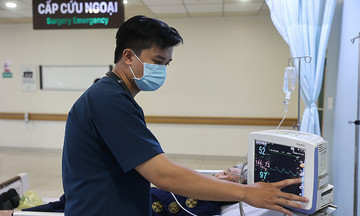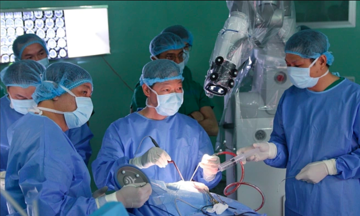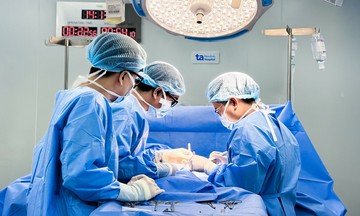Nocturnal emissions, or wet dreams, occur when men involuntarily ejaculate during sleep, typically during REM sleep. This results from the interplay of the central nervous system, the endocrine system, and the reproductive organs. Hormonally, the hypothalamus releases GnRH, stimulating the pituitary gland to produce LH and FSH, which in turn prompt the testes to produce testosterone. Testosterone levels peak in the early morning hours, increasing unconscious sexual arousal.
During REM sleep, brainwave activity increases, particularly in areas associated with emotions and sexual behavior. Simultaneously, physiological erections occur naturally 3-5 times each night. When these factors combine strongly enough, the ejaculatory reflex is automatically triggered. Typically, 95% of nocturnal emissions coincide with REM sleep.
According to Doctor Tra Anh Duy of the Men’s Health center, nocturnal emissions are a normal biological reflex, especially common in adolescent boys during puberty. The frequency depends on age, sexual activity, frequency of deliberate ejaculation, stress levels, and overall health. One study found that about 83% of males aged 13 to 17 have experienced nocturnal emissions. This frequency decreases with age and regular sexual activity.
Another study in JAMA found that 85% of men aged 15-29 experienced at least one nocturnal emission within 12 months. A frequency of 1-3 times per month is considered normal. If it occurs more than twice a week for an extended period, accompanied by fatigue, sleep disturbances, or pain, medical consultation is recommended.
Recently, Doctor Duy saw a 16-year-old boy brought in by his mother due to "wetting his pants" at night. The boy, having experienced 4 nocturnal emissions in a month, was anxious, scared, and losing sleep. The doctor's examination revealed no underlying medical conditions, determined it was physiological, provided sex education, and helped the teen improve his sleep and mental state.
Differentiating from similar phenomena:
Spermatorrhea: This is the spontaneous discharge of semen without pleasure or sexual dreams, which can occur even while awake. It's a sexual dysfunction related to neurological or hormonal factors.
Sexsomnia: This is a sleep disorder where individuals engage in sexual behavior while asleep but are completely unaware. Unlike nocturnal emissions, sexsomnia can cause dangerous behavior and requires diagnosis through a sleep study.
When are nocturnal emissions a sign of a medical issue?:
Unusually increased frequency (more than twice a week for over a month).
Causes fatigue, sleep loss, and impacts quality of life.
Accompanied by painful ejaculation, burning urination, or perineal pain.
Change in semen color, foul odor, or blood in semen.
Causes anxiety, feelings of shame, or social withdrawal.
Sexual behavior during sleep, which could indicate sexsomnia.
 |
Doctors recommend seeking medical advice if the frequency of nocturnal emissions increases abnormally, affects mental or physical health, or is accompanied by pain or abnormalities in semen. Photo: Lam Anh |
Doctors recommend seeking medical advice if the frequency of nocturnal emissions increases abnormally, affects mental or physical health, or is accompanied by pain or abnormalities in semen. Photo: Lam Anh
Some common medical causes:
Chronic seminal vesiculitis: Increases pressure from secreted fluids, causing nocturnal emissions accompanied by pain after ejaculation.
Prostatitis: Causes tension and discomfort in the pelvic area.
Hormonal imbalance: Increased prolactin, decreased testosterone.
Stress, anxiety disorders, or autonomic nervous system disorders.
Diagnosis and treatment of pathological nocturnal emissions:
Doctors will take a detailed medical history, including frequency of emissions, accompanying sensations, and circumstances of occurrence, along with a physical examination of the testicles, prostate, and perineum. Patients typically undergo a transrectal ultrasound to evaluate the seminal vesicles and prostate, a semen analysis to check semen quality, white blood cell count, and color, and hormone tests for testosterone and prolactin. If sexsomnia is suspected, a sleep study will be conducted.
Depending on the cause, treatment may include sex education and psychotherapy (especially important for adolescents), antibiotics and anti-inflammatories (if there's seminal vesiculitis or prostatitis), physical activity, stress management, and hormone therapy (if there's a hormonal imbalance).
Le Phuong












